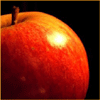Statistical Methods for Dose-Finding Studies
S. Chevret
Dose-finding experiments define the safe dosage of a drug in development, in terms of the quantity given to a patient. Statistical methods play a crucial role in identifying optimal dosage. Used appropriately, these methods provide reliable results and reduce trial duration and costs. In practice, however, dose-finding is often done poorly, with widely used conventional methods frequently being unreliable, leading to inaccurate results. However, there have been many advances in recent years, with new statistical techniques being developed and it is important that these new techniques are utilized correctly. Statistical Methods for Dose-Finding Experiments reviews the main statistical approaches for dose-finding in phase I/II clinical trials and presents practical guidance on their correct use. Includes an introductory section, summarizing the essential concepts in dose-finding. Contains a section on algorithm-based approaches, such as the traditional 3+3 design, and a section on model-based approaches, such as the continual reassessment method. Explains fundamental issues, such as how to stop trials early and how to cope with delayed or ordinal outcomes. Discusses in detail the main websites and software used to implement the methods. Features numerous worked examples making use of real data. Statistical Methods for Dose-Finding Experiments is an important collaboration from the leading experts in the area. Primarily aimed at statisticians and clinicians working in clinical trials and medical research, there is also much to benefit graduate students of biostatistics.
więcej
Informacje dodatkowe o Statistical Methods for Dose-Finding Studies:
Wydawnictwo: angielskie
Data wydania: b.d
Kategoria: Medycyna i zdrowie
ISBN:
Liczba stron: 0
Kup książkę Statistical Methods for Dose-Finding Studies
Sprawdzam ceny dla ciebie ...
Cytaty z książki
REKLAMA
















Chcę przeczytać,